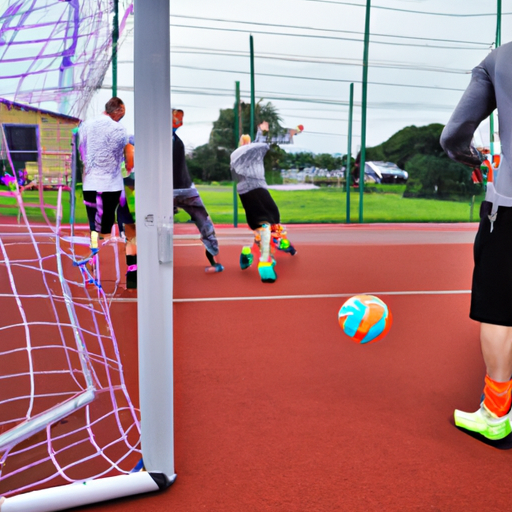
Understanding the Importance of Physical Exercise for Overall Health
Regular physical exercise is essential for overall health and well-being. Not only does it help maintain a healthy weight, but it also has numerous benefits for our mental, cardiovascular, and musculoskeletal systems. Understanding the importance of physical exercise can inspire individuals to incorporate regular activity into their daily routines.
One crucial aspect of physical exercise is its positive impact on mental health. Engaging in activities such as jogging, swimming, or yoga releases endorphins, which are natural mood elevators. Regular exercise is known to reduce symptoms of anxiety and depression, improve sleep quality, and boost self-confidence. It can also serve as a form of stress relief, providing an outlet for pent-up emotions and allowing individuals to clear their minds.
In terms of cardiovascular health, physical exercise plays a significant role in preventing heart disease and maintaining a healthy heart. Regular aerobic activities, such as jogging or cycling, help strengthen the heart muscle and improve its efficiency in pumping blood throughout the body. This, in turn, lowers the risk of high blood pressure, stroke, and heart attacks. Additionally, exercise helps increase high-density lipoprotein (HDL) cholesterol levels, also known as “good” cholesterol, while reducing levels of triglycerides, unhealthy fats that can clog arteries.
Furthermore, engaging in physical exercise is crucial for maintaining strong and healthy bones, muscles, and joints. Weight-bearing activities like walking or weightlifting help stimulate bone growth and reduce the risk of conditions such as osteoporosis. Regular exercise also helps build muscle strength and endurance, improving overall physical performance and reducing the risk of injuries. Additionally, it can help manage chronic conditions such as arthritis by improving joint flexibility and reducing joint pain.
In conclusion, understanding the importance of physical exercise is vital for individuals who aim to improve their overall health. Engaging in regular physical activity provides numerous benefits, including improved mental health, cardiovascular health, and musculoskeletal health. By incorporating exercise into our daily routines, we can enhance our well-being and lead healthier lives.
Exploring Different Types of Physical Activities to Stay Fit and Active
When it comes to staying fit and active, there are numerous types of physical activities to choose from. Engaging in regular exercise not only helps maintain a healthy weight, but it also improves cardiovascular health, builds endurance, increases flexibility, and reduces the risk of chronic diseases. In this article, we will explore different types of physical activities that can help you stay fit and active.
1. Cardiovascular exercises
Cardiovascular exercises are activities that get your heart rate up and increase your breathing rate. They are great for improving your cardiovascular health and burning calories. Examples of cardiovascular exercises include running, cycling, swimming, dancing, and aerobic classes.
2. Strength training
Strength training exercises involve using resistance to build and strengthen muscles. These activities improve bone density, boost metabolism, and increase your overall strength and endurance. Weightlifting, resistance band exercises, bodyweight exercises, and yoga are all forms of strength training.
3. Flexibility exercises
Flexibility exercises help improve joint range of motion and prevent injuries. Stretching, yoga, and pilates are excellent examples of flexibility exercises. Incorporating these activities into your routine helps to maintain good posture and flexibility.
4. Balance and coordination exercises
Balance and coordination exercises focus on improving your stability and motor skills. These activities are particularly important for older adults to prevent falls and maintain independence. Some examples of balance and coordination exercises are tai chi, yoga, and certain forms of dancing.
5. Sports
Engaging in sports is a fun and effective way to stay active. Sports like basketball, soccer, tennis, and volleyball not only provide physical benefits but also promote teamwork, socialization, and strategic thinking. Find a sport that interests you and start playing!
6. Outdoor activities
Outdoor activities are a great way to enjoy nature while staying active. Hiking, cycling, swimming, kayaking, and gardening are all excellent choices. These activities offer a change of scenery and can make exercising feel more enjoyable.
No matter which type of physical activity you choose, the key is to find something that you enjoy and can incorporate into your regular routine. Aim for at least 150 minutes of moderate-intensity exercise or 75 minutes of vigorous-intensity exercise each week, along with strength training exercises at least twice a week. Remember to always warm up before exercising and listen to your body to prevent injuries. Stay active and stay healthy!
The Role of Regular Exercise in Mental Well-being and Stress Management
Regular exercise plays a crucial role in promoting mental well-being and effectively managing stress. Engaging in physical activity has been proven to have positive effects on various aspects of mental health, including reducing symptoms of anxiety and depression, improving mood, and enhancing overall cognitive function.
One of the key benefits of exercise for mental well-being is its ability to reduce stress. When we engage in physical activity, our bodies release endorphins, commonly known as “feel-good” hormones. These endorphins act as natural painkillers and mood elevators, helping to alleviate stress and promote a sense of well-being. Regular exercise also helps to regulate the production of stress hormones, such as cortisol, which can contribute to feelings of tension and anxiety.
Additionally, exercise provides a healthy outlet for managing and releasing pent-up emotions, frustrations, and negative energy. It serves as a form of catharsis, enabling individuals to channel their emotions in a productive way. This can be particularly beneficial for individuals dealing with high levels of stress or experiencing symptoms of mental health disorders.
Exercise is also known to enhance cognitive function and improve memory and concentration. When we engage in physical activity, blood flow to the brain increases, delivering oxygen and nutrients that are essential for optimal cognitive performance. Regular exercise has been linked to improved learning abilities, increased creativity, and enhanced problem-solving skills. These cognitive benefits can help individuals effectively manage stress by improving their ability to think clearly and make rational decisions.
Moreover, exercise is a powerful tool for promoting self-care and self-esteem. Engaging in regular physical activity can boost one’s sense of self-worth and promote body positivity. This, in turn, can have a positive impact on mental well-being, reducing feelings of stress, anxiety, and depression that may arise from negative body image or low self-esteem.
In conclusion, regular exercise is a vital component of maintaining optimal mental well-being and managing stress. By reducing stress levels, improving mood, enhancing cognitive function, and promoting self-care, exercise can effectively contribute to overall mental health. Incorporating physical activity into one’s daily routine can bring about significant improvements in mental well-being and provide a valuable tool for stress management.
Implementing a Balanced Exercise Routine for Optimal Results
When it comes to achieving optimal results from your exercise routine, it’s important to create a balanced and well-rounded program. A balanced exercise routine not only helps you reach your health and fitness goals faster, but it also reduces the risk of injury and keeps you motivated to continue working out.
One important aspect of a balanced exercise routine is incorporating different types of exercise. This includes aerobic or cardiovascular exercises, strength training, and flexibility exercises. Each of these components offers unique benefits that contribute to overall fitness and well-being.
Aerobic exercises, such as running, cycling, or swimming, are essential for improving cardiovascular health and burning calories. They increase your heart rate, boost your endurance, and enhance the efficiency of your lungs. Aim for at least 150 minutes of moderate-intensity aerobic activity or 75 minutes of vigorous-intensity aerobic activity each week.
Incorporating strength training exercises into your routine is also crucial. Strength training helps build and tone your muscles, increases bone density, and improves your posture. It can involve using free weights, resistance bands, or even your own bodyweight. Aim for at least two days of strength training exercises per week, targeting all major muscle groups.
Flexibility exercises, such as yoga or stretching, are often overlooked but are equally important. They help improve joint mobility, posture, and relieve muscle tension. Regular flexibility training can enhance your overall performance and reduce the risk of injuries. Include flexibility exercises in your routine at least two to three times per week.
Additionally, it’s important to consider your individual fitness goals and preferences when designing your exercise routine. If weight loss is your main objective, combining aerobic exercises with strength training sessions can be highly effective. On the other hand, if you want to improve your flexibility and reduce stress, incorporating more yoga or Pilates classes may be beneficial.
Remember to gradually increase the intensity and duration of your workouts to avoid overexertion and injury. It’s also essential to listen to your body and give yourself enough time to rest and recover. Implementing a balanced exercise routine is a long-term commitment, so it’s important to find a routine that you enjoy and can realistically stick to.
In conclusion, by implementing a balanced exercise routine that includes aerobic, strength training, and flexibility exercises, you can maximize your results and improve overall fitness. Remember to personalize your routine based on your goals, gradually increase the intensity, and prioritize rest and recovery. With consistency and dedication, you will be on your way to achieving optimal results from your exercise program.



